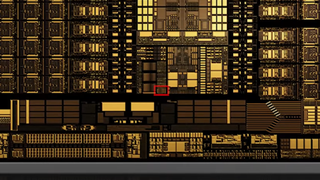Nvidia Driver Unlocks Performance Boosting GPU System Processor
It will be a feature exclusive to 2022 Max-Q laptops and Enterprise GPUs for now

As shared in a recent Nvidia document for Linux, Nvidia has quietly unlocked a new feature in its enterprise and consumer GPUs that's been in hiding since the Turing generation. Known as the GSP or GPU System Processor, this piece of silicon offloads driver duties from the CPU onto the GPU to improve performance and efficiency. It was officially unlocked for use in the latest Nvidia drivers.
The feature is available now if you have a qualifying enterprise Nvidia GPU and Nvidia driver 510.39.01 or later. GPU support ranges from the Turing-based Tesla T4, all the way to the Nvidia A series, such as the A100, A2, and A40.
GSP is an actual piece of silicon on the GPU (like the NVENC controller) that acts as a co-processor for the paired Nvidia GPU. Its function is to offload GPU initialization and management tasks from the CPU directly onto the GPU, in an effort to reduce overall system latency and improve system performance. Nvidia says that the functionality of GSP is limited at this point, but will continue to expand in future driver releases. So expect Nvidia to rely more and more on this co-processor to reduce CPU load.
We could potentially see some decent performance gains in both gaming and heavy GPU-centric applications where the CPU plays a critical role in supplying the GPU with information. This is especially true now that modern games are taking more advantage of the CPU than ever before, thanks to the maturity of lower-level APIs.
Despite Nvidia saying it has locked down the feature to Enterprise solutions (for now), Nvidia also announced the feature as a critical component for Max-Q laptops coming in 2022 and beyond.
In a new YouTube video released today, Nvidia explains how its latest version of Max-Q will maximize efficiency between the CPU and GPU. One of those features includes GSP -- but in this instance, Nvidia calls it a "command processor" instead of a GPU System Processor.
We believe the GSP and "command processor" are the same thing since they function in the same way by offloading low-level tasks from the CPU to the GPU in an effort to improve performance. In the case of Max-Q, Nvidia gives the example of command validation, which performs pointer verification and balance checking, and how this workload will be transitioned from the CPU to the GPU for better performance.
Stay on the Cutting Edge
Join the experts who read Tom's Hardware for the inside track on enthusiast PC tech news — and have for over 25 years. We'll send breaking news and in-depth reviews of CPUs, GPUs, AI, maker hardware and more straight to your inbox.
We still don't know a lot about GSP, like its actual performance benefits or its full functionality. However, we expect we'll know more soon as Nvidia continues to develop this feature in 2022.

Aaron Klotz is a freelance writer for Tom’s Hardware US, covering news topics related to computer hardware such as CPUs, and graphics cards.
Most Popular




